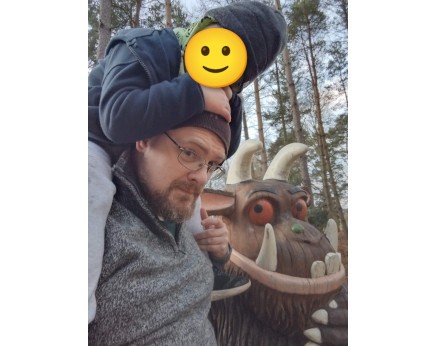Meet the minds that make up Hub: Neil Bateman

Neil Bateman has been part of our team here at Hub for two years. Here he shares some insights into Hub's culture and approach and what its like pursuing a career in transport planning.
What does a typical day look like for an Associate in transport planning?
Usually I begin by reviewing progress on tasks against deadlines, talk to team members to check they’re happy with their current tasks and address queries, then work on my own tasks within the projects I’m responsible for, which will normally be focussed on transport assessments, design and junction modelling. And of course there’s plenty of team catch ups, liaising with clients and responding to correspondence with officers at the various local authorities and statutory bodies covering our projects.
Why did transport planning appeal to you as a career choice, and what makes it a good industry to work in?
Honestly, it wasn’t something I planned as such, but an opportunity for working on survey of public transport infrastructure came up when I was 18, and I worked my way through various aspects of the profession from there, first GIS, public transport, modelling, then the broader assessment and appraisal work.
As an industry it’s a very broad profession, there are roles where there’s intensely technical work with a focus on modelling, or more people-oriented positions, where communication and presentation skills are really important. That breadth allows for people to pick a career style to aim for which engages them intellectually and uses their skills well, but also allows us to challenge ourselves and grow over time.
What do you enjoy about working for Hub?
It’s a good team, with people who work well together. I feel that there’s a very good culture of taking responsibility, being honest and supporting one another.
What are you working on at the moment?
I’m currently working on two Transport Assessments for large, residential led, mixed use developments in Nuneaton and Medway. Both are now in the post-submission stage, where I’m responding to feedback from Local Authorities, National Highways and Active Travel England. Each site presents its own challenges, particularly around integrating with the existing transport network, delivering strong active travel links and connecting well to surrounding communities.
Alongside that I’ve got some smaller projects and I’m waiting for another large Transport Assessment to start, so I’m in the process of arranging surveys, talking to the local authorities and working out the resource for those.
What advice would you give to someone aspiring to enter the field of transport planning?
Pay attention to the world around you and the human behaviours and designs of transport as you yourself travel. Everything you see will be there for a reason – not always a good one, and often a compromise between pressures of cost, space and regulation. Thinking through those choices and understanding the purpose of other people’s designs will help you down the line.
When you evaluate or design things as a transport planner, there is always a practical reality that should be somewhere in your mind, because we want to make useful infrastructure that enables people to do the things that they want to do safely, be it by car, foot, bike or wheelchair.
How do you unwind after a particularly challenging project or day?
I read - mostly history or fiction books. I’m currently working through some books by Diarmuid MacCulloch which were a present. And I’m lucky enough to live near Cannock Chase, so often head out for a walk or a cycle there.
